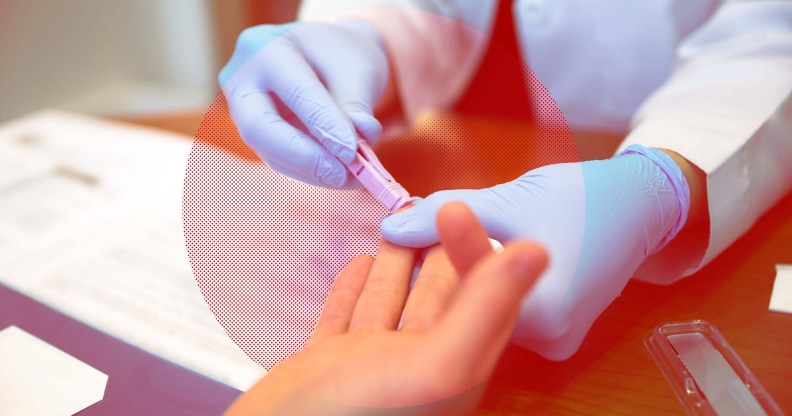Man cured of HIV after stem cell transplant, scientists say

A person takes a blood sample for a HIV test. (Getty)
A man in Germany is reported to have become the fifth person to be cured of HIV.
The man, aged 53 and known only as “the Düsseldorf patient”, is the third person to have been cured through stem cell transplants, according to researchers.
Diagnosed with HIV in 2008, the man received stem-cell treatment in February 2013 to treat leukaemia. The illness was diagnosed six months after starting HIV therapy.
The researchers say that the man is “alive and in good health”, having ended HIV therapy four years ago without relapsing.
In a statement, via Sky News, the man said he spent Valentine’s Day celebrating the 10th anniversary of his bone marrow transplant “in a big way”, with the donor “present as a guest of honour”.
He could “still remember” his family doctor telling me they would “experience together that HIV can be cured”.
The patient added: “At the time, I dismissed the statement as an alibi. Today, I am all the more proud of my worldwide team of doctors who succeeded in curing me of HIV – and, at the same time, of course, of leukaemia”.
The study, which was published in the Nature Medicine journal, was the longest and most precise monitoring of a patient after a stem cell transplant.
The researchers hope the information will help more studies into cures for HIV.
Dr Bjorn-Erik Ole Jensen, speaking on behalf of the international research team, said more research was now needed to see how their method of curing HIV “can be made possible outside the narrow set of framework conditions we have described”, Sky News reported.
The other two patients cured of HIV through stem cell transplants also had the transplants to treat blood disorders.
The fourth person to be cured of HIV was also being treated for leukaemia. The 66-year-old patient was declared cured in 2022, having lived with the virus since being diagnosed in 1988.
His bone marrow transplant donor had a genetic mutation that made him resistant to HIV.

